
views
Preparing to Breed

Consider your breeding goals before you begin. Think about your reasons for wanting to breed rats before you start a breeding program. If you plan to breed rats to sell on a large scale, then you will need to have an appropriate venue as well as lots of supplies, such as food, cages, and bedding. Breeding rats on a large scale is an expensive, time consuming venture. Ensure that you have the space, resources, and time available to care for the rats that you breed.
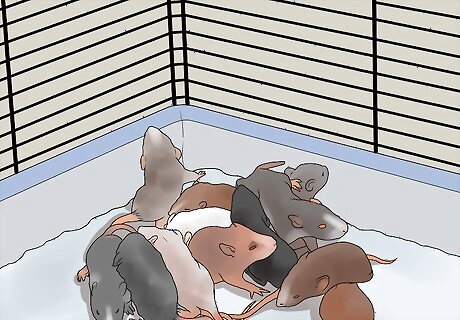
Secure homes for the rat kittens before breeding. Rat litters produce 10-12 rats and it is important to make sure that you will be able to find homes for all of them before you start breeding. There is already a high population of rats, so responsible breeding is essential. Keep in mind that most pet stores will not buy rats from local breeders, so it is unlikely that you will be able to sell baby rats to them. Even if you are able to sell to a pet store, the babies may end up as snake food rather than as pets. Do not sell rats to children under the age of 16 without making sure that the parents approve. The rat may end up homeless or you may have to deal with an angry parent. Do not sell rats under six weeks old or they may not survive. Do not sell rats in large quantities. If someone wants to buy several rats at once, then that person may be planning to feed the rats to a pet reptile.
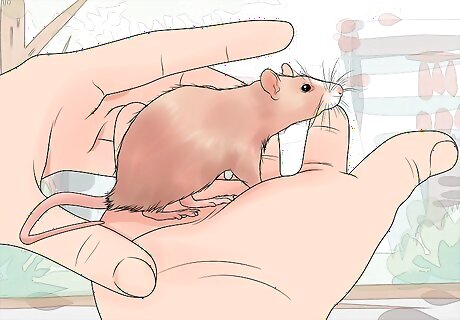
Select rats that are not directly related. Inbreeding your rats (mother and son, sister and brother, etc.) increases the chance that a genetic flaw will be passed on, so it is best to breed rats that are not directly related to each other. If you are not sure about whether or not your rats are related, then check with the breeder who sold you the rats. Many breeders use what is called "line breeding" to ensure that their rats have good qualities. In this breeding strategy, you may breed rats that are related, but not too closely. For example, you could breed a half brother and a half sister or an aunt and a nephew.

Consider the ages of your rats. Rats cannot be bred until they reach sexual maturity, which depends on age. Rats can reach sexual maturity quite early, but there are other things to consider as well. Select a doe (female rat) that is between five to seven months for best results. Younger does may not be capable of reproducing and older rats may have complications or be infertile. Does tend to have a drop in fertility at around 15 to 18 months old. Select a buck (male rat) that is between six and 12 months. Older bucks may be sterile or may produce offspring with deformities.

Examine your rats to check for signs of good health. The buck and doe that you decide to use for breeding should be healthy and energetic. Do not breed rats that appear to be sick or lethargic. Signs that a rat is healthy enough for breeding include: a shiny, glossy coat a healthy weight playful, energetic behavior
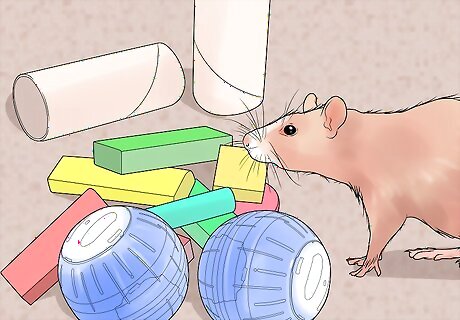
Take personalities into account. It is important to breed good natured rats so that their offspring will make good pets. Do not breed any rats that seem aggressive or that tend to bite. Choose rats that are good natured and playful in order to pass these personality traits on to their children.
Breeding Rats

Observe the doe for signs of heat. Does go into heat every four to five days, but there are a couple of signs that you can watch for to determine if your doe is in heat. Some of the common signs that your doe may be in heat include: wiggling or vibrating her ears rapidly arching her back so that her vulva is exposed

Place the buck and doe together. If you suspect that your doe is in heat, then it is a good time to place your buck and doe together so that they can mate. Try placing them in the same cage together overnight and give them some privacy. You can remove the male rat from the cage in the morning. To ensure that your doe becomes pregnant, you can leave the buck and doe together for up to 10 days. Just keep in mind that using the 10 day method may make it harder for any other male rats that you have to accept the buck after he returns because he will smell like the doe. You may want to make the reintroduction in a neutral space to reduce the chances of a fight.
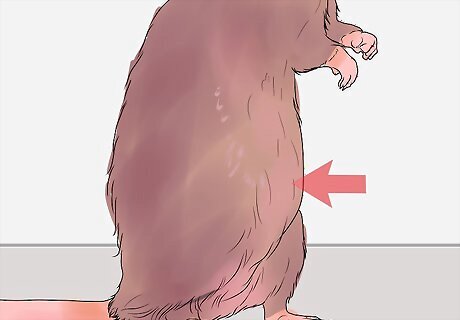
Watch for signs of pregnancy. Pregnancy lasts about 21 days in rats and a doe may not show any signs of pregnancy until she is in her last week of pregnancy. At that point, her belly may appear larger and fuller and you may also notice that her chest looks a little fuller. Do not try to feel the babies in her abdomen or you may harm or kill them. Keep in mind that signs of pregnancy are not always obvious. To be sure that your doe is pregnant, you will have to take her to a veterinarian for a physical exam.
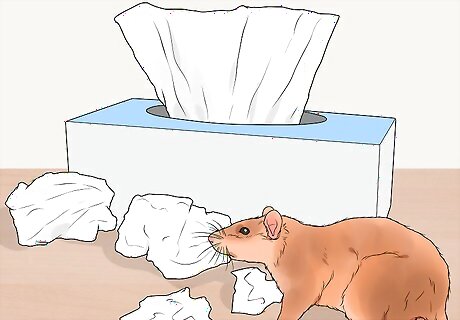
Provide nesting materials. A pregnant doe will also start building a nest in preparation for her babies. Make sure that you allow her to do this and provide her with some good materials for her nest. Try giving her a few sheets of tissue paper to use as nest material. Hay, straw, and shredded paper also make good nesting materials. Do not provide your doe with red cedar or cotton waste (often sold as hamster bedding). These materials may cause some of the rat kittens to die.
Caring for a Pregnant Doe

Create a quiet space for the pregnant doe. In the last few days of pregnancy, it is a good idea to allow a doe plenty of space and quiet so that she can prepare to give birth. You should keep cleaning her cage every other day because you will not be able to clean it for the first two weeks following birth.Try to disturb the doe as little as possible as you clean.
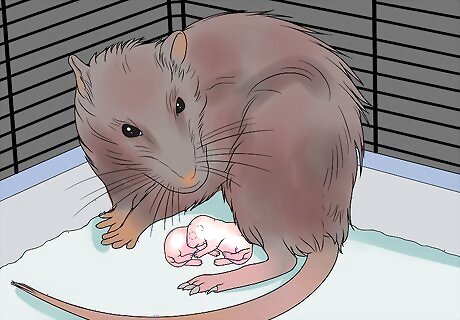
Allow the doe to deliver her babies on her own. It is not necessary, or wise, to intervene while a doe is giving birth. Even if she appears to be struggling, do not try to assist her or stop her from doing anything that she is trying to do. She is capable of delivering and cleaning her babies on her own. After giving birth, the doe will eat the placenta and that is normal. Let her do it. Some of the kittens may be stillborn. If this happens, the doe will either eat them or ignore them. If she ignores them, then you may remove them from the cage after she is finished giving birth.
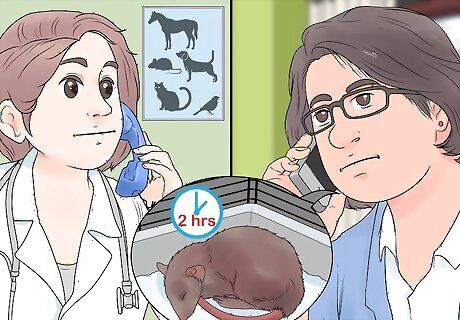
Contact your rat’s veterinarian if birthing takes more than two hours. If your doe has not delivered her babies within two hours, then there may be a problem. In this case, call your veterinarian to get advice and assistance. There may be a blockage and she may require surgical intervention, which will require sterile equipment and anesthetics that only a trained veterinarian should provide.

Give the doe a rest period of at least two months. After a doe has become pregnant, she will need about two months to be ready for another pregnancy. During this rest period, keep her away from other rats except for her babies and provide her with plenty of food, water, and bedding. Some does will eat their young if they do not have enough of these necessities. Keep in mind that male rats are capable of breeding from about six weeks old, so it is a good idea to separate the male and female rats after a few weeks.




















Comments
0 comment